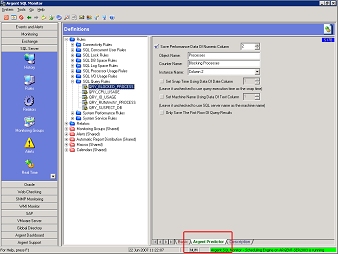SQL Query Rules
These Rules execute a single customizable SQL statement, stored procedure, or a T-SQL block on a specified SQL Server instance/database.
In other words, the Argent Query Rules are essentially a product-within-a-product – you can use these Rules to do whatever you want to monitor whatever you want…
SQL Server provides a number of “sys*” tables containing system-wide or database-wide information.
The execution of configured SQL is expected to return a recordset. It is checked according to configured “Check Option“:
- Rule is not broken if any row is returned
- Rule is broken if any row is returned
- Rule is not broken if any row satisfies the condition – further described below
- Check all rows (i.e. all rows must satisfy the condition to pass the check) – further described below
With the last two rules, additional configuration is necessary. This is done in the area marked below:
To define the condition, the following dialog is used:
Multiple conditions can be specified, optionally combined with “OR” clause. If there is no “OR” specified, an “AND” is implied.
The returned data can be saved to the Argent Predictor. To configure this option, use the Argent Predictor tab. The Argent Predictor is Argent’s integrated trend analysis and capacity planning too.


